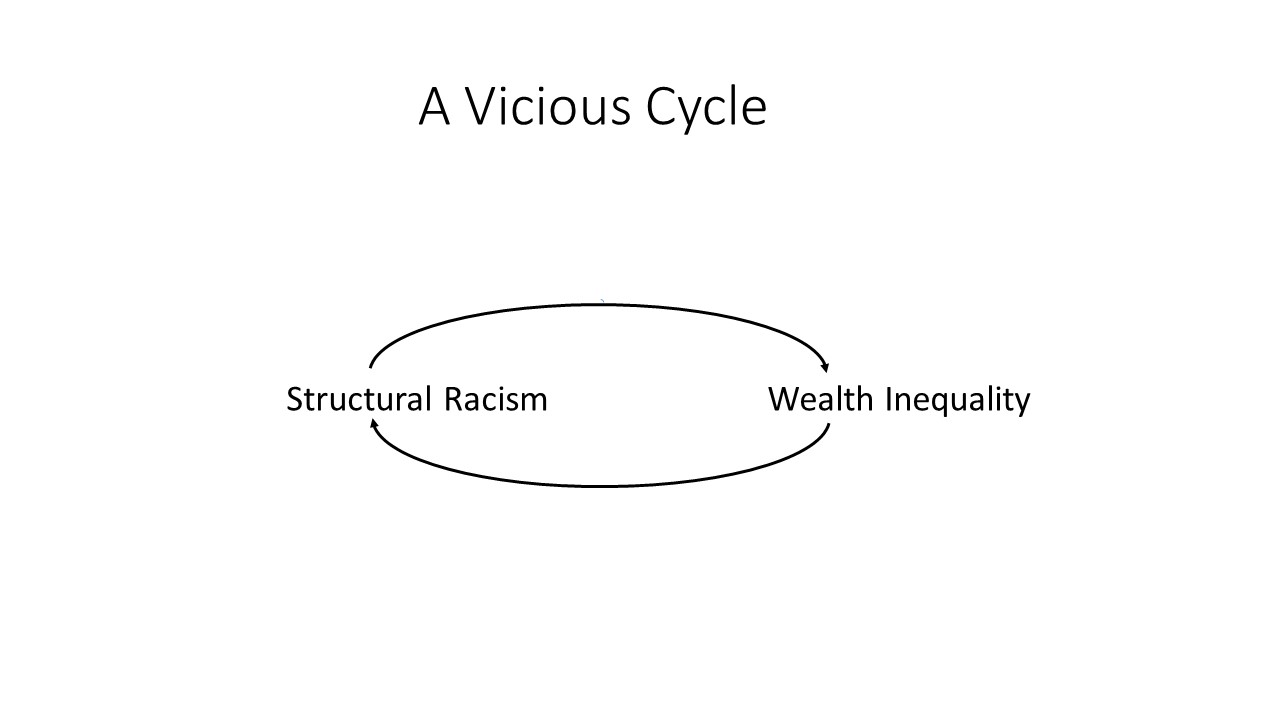How Wealth Inequality Compounds Racism
This blog post is authored by Academy Faculty Member, David Peter Stroh, and can be read in full here.
Our combined outrage at the brutal treatment of Black people by police and the differential impact of COVID on people of color who comprise essential workers has pushed structural racism to the foreground of American consciousness. Racism is a legitimate cause of passionate concern. At the same time we also need to address another equally disruptive force in our society: the growing wealth inequality that is also a source of structural racism.
While we are becoming more aware of how structural racism increases the wealth gap between whites and people of color, we also need to understand how wealth inequality exacerbates structural racism.Not only does the vicious cycle in the following figure make it harder to reduce racism, but it also threatens the very social, economic, and political fabrics of our nation.
The goals of this post are to illuminate the interdependencies between structural racism and wealth inequality and to suggest initial leverage points for breaking this cycle.
So many events over the past few months – from the police killing of George Floyd to Amy Cooper’s demeaning use of white privilege, the uncovered murder of Ahmaud Arbery, and the harsh backlash against peaceful protesters encouraged by President Trump – have thrust our country’s racist tendencies into the foreground once more. Outrage at racial inequity has also been amplified by the differential impact of COVID on people of color; Black and Hispanic Americans are 2-4 times more likely to die from the disease than white Americans.[i] People in both groups are employed primarily as essential front-line workers, those who earn the least amount of money while being subjected to the greatest risk of exposure to the virus.
The vulnerability of African Americans to disease can be traced back to their enslavement. Sabrina Strings, a University of California, Irvine associate professor of sociology writes, “The era of slavery was when white Americans determined that black Americans needed only the bare necessities, not enough to keep them optimally safe and healthy. It set in motion black people’s diminished access to healthy foods, safe working conditions, medical treatment and a host of other social inequities that negatively impact health.[ii] African Americans continued to face discrimination even after they were officially freed from slavery. They initially were denied property which had been promised to them as reparations. They subsequently endured Jim Crow laws that denied their equal access to housing, education, and voting rights. They have also been subjected to police discrimination, and over the past 40 years they have been the targeted victims of mass incarceration (characterized by Michelle Alexander as The New Jim Crow).[iii] Mass incarceration has broken up their families and communities as well as left generations of their men unable to find viable employment even after being released from prison.
In summary African Americans have been systematically denied the ability to acquire the basic resources required for wealth generation. Structural racism is an underlying cause of wealth inequality between African Americans and whites. For example, Black families in America earn just $57.30 for every $100 in income earned by white families, according to the Census Bureau’s Current Population Survey. For every $100 in white family wealth, black families hold just $5.04.[iv] Furthermore, Blacks are more than twice as likely to be poor, and the Black unemployment rate is almost double the rate for whites.[v]

